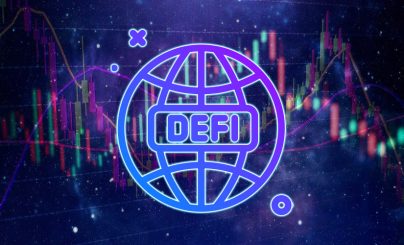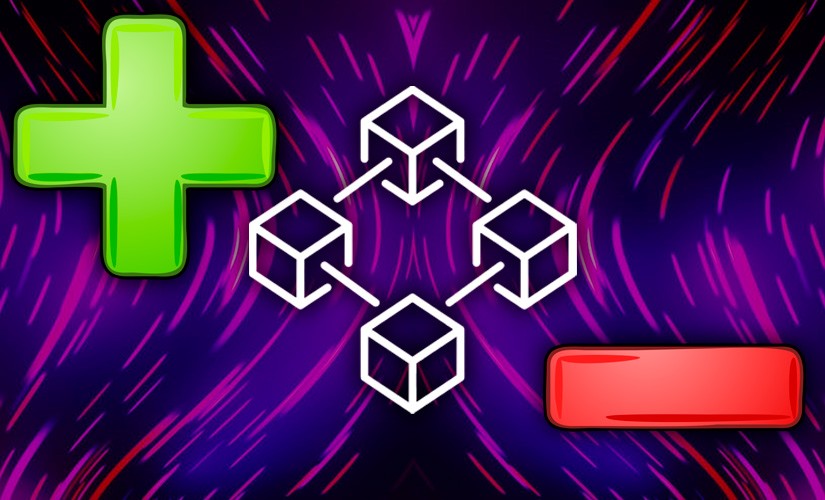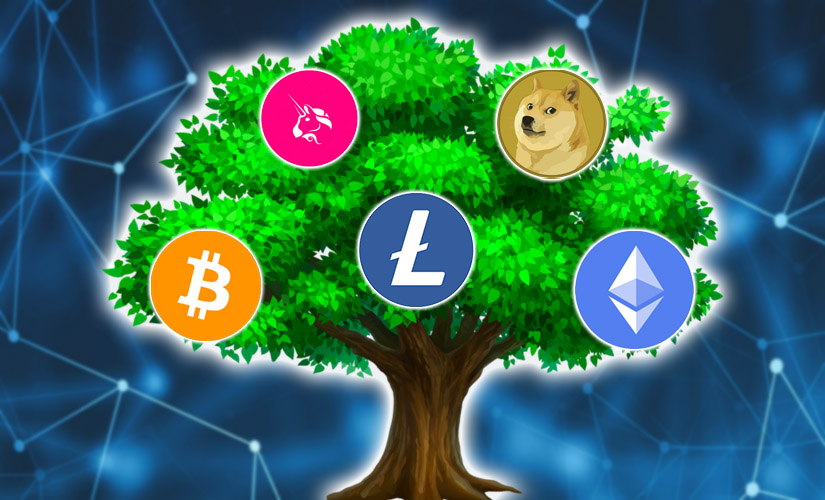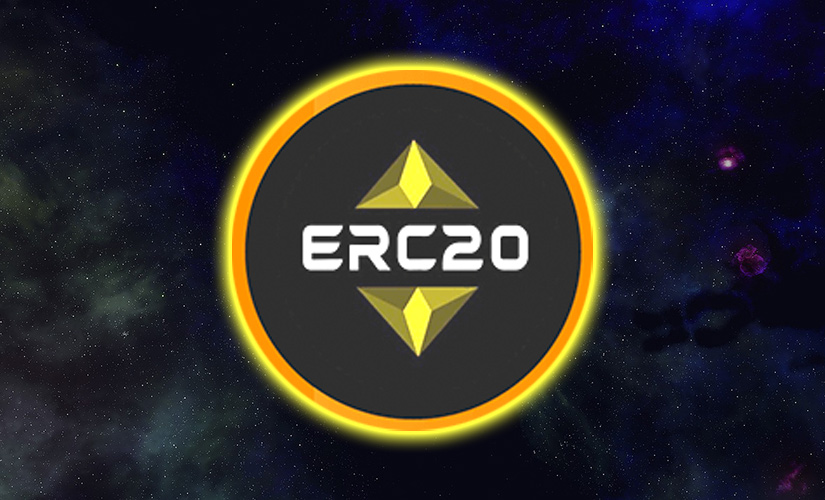The direction of decentralized finance has been actively developing since 2020. Then, in just 6 months, the volume of funds blocked in DeFi applications grew more than 10 times. Users are attracted by the ability to maintain anonymity, as well as a variety of ways to earn money. In the article we will tell you what the DeFi market is, what it consists of and how to invest in it. Readers will learn about the most popular areas – crypto loans, lending and profitable farming.
What is a DeFi marketplace
The main objective of this trend is to create an alternative to traditional banking products. With the help of protocols on the blockchain, a large number of people can get access to lending secured by digital currencies, as well as to services for earning money and other innovative projects (betting on events, crypto-insurance, tokenized assets). At the same time, users retain anonymity and control over their funds.
In traditional banks and CEX, a customer must open an account and transfer money to get started. If the organization goes bankrupt, the funds will be difficult to recover. DeFi projects do not commit to keeping assets. Users connect personal wallets to the applications, the private codes from which are not known to anyone except the owners.
History and development
The beginning of the DeFi movement is considered to be 2015, when the Ethereum blockchain was launched and smart contract technology emerged. Developers can program any action in the code. The concepts of many projects (for example, MakerDAO) appeared even before the launch of Ethereum. However, they were only able to realize them in 2017. At that time, the first DEX – EtherDelta – was also created.
The industry was boosted by ICOs, which were popular in 2017. With their help, companies and individuals can participate in the launch of projects. In this sense, ICOs achieve the main goal of DeFi – to open access to financial services for everyone. At the same time, the Aave lending platform and the 0x network appeared.
5020 $
bónusz az új felhasználóknak!
A ByBit kényelmes és biztonságos feltételeket biztosít a kriptopénz kereskedéshez, alacsony jutalékokat, magas szintű likviditást és modern eszközöket kínál a piacelemzéshez. Támogatja az azonnali és a tőkeáttételes kereskedést, és intuitív felülettel és oktatóanyagokkal segíti a kezdőket és a profi kereskedőket.
Keress 100 $ bónuszt
új felhasználóknak!
A legnagyobb kriptotőzsde, ahol gyorsan és biztonságosan elindulhat a kriptovaluták világában. A platform több száz népszerű eszközt, alacsony jutalékokat és fejlett eszközöket kínál a kereskedéshez és befektetéshez. Az egyszerű regisztráció, a tranzakciók nagy sebessége és a pénzeszközök megbízható védelme teszi a Binance-t nagyszerű választássá bármilyen szintű kereskedők számára!
Developers began to develop the direction and moved from a user-to-user model to a client-to-smart-contract model. In 2018, DEX Uniswap was launched. It utilizes an innovative AMM (automated market maker) asset exchange model.
The rapid growth of the DeFi market started in 2020. Several factors contributed to this:
- The launch of the Compound platform and the emergence of the income farming trend. Users started borrowing and lending different tokens in an attempt to get better results.
- The emergence of Yearn, a service to transfer tokens between networks. This allowed for a uniform liquidity in protocols. Users were able to choose the most favorable offers regardless of the chain.
- The launch of SushiSwap. DEX offered users attractive conditions for placing assets in pools, which stimulated cryptocurrency transfers from other protocols. Already a week after the launch, the volume of blocked funds exceeded $1 billion.
- The emergence of NFT. The rapid growth of prices for digital objects stimulated users to invest in this sphere.
At the dawn of the development of decentralized finance, more than 90% of projects were launched on the Efirium blockchain. After a surge in demand in 2021, commissions on the network rose to $50-100. Users with deposits of less than $1k were not able to access applications. Therefore, developers started looking for other solutions.
In June 2023, there are 724 projects (only 205 of the total) operating on the Ethereum blockchain, with $25.36 billion (58%) of funds blocked.
Composition
DeFi make trading simple and convenient. Due to the absence of intermediaries, risks are reduced. Work with such projects can be completely anonymous. The sector includes many directions. The most popular are:
- Lending platforms. Users can borrow some assets against the collateral of others. Usually they take loans in stablecoins with collateral in top coins (Bitcoin, Ethereum). However, other combinations are possible.
- DEX (decentralized exchanges). Clients are offered to exchange assets without losing control over them. Most platforms have limited functionality compared to CEX (no futures, options, margin trading). You have to pay a network commission for each transaction. Many DEXs operate on an AMM model. Users can become liquidity providers for a good fee. For top coins it usually does not exceed 10%, but for new tokens it sometimes reaches 1000% per annum.
- Synthetic assets. Derivative tokens on the blockchain open access to real markets (raw materials, stocks).
- Tokenization. It is possible to transfer real assets (real estate, equipment, art objects) to blockchain. They are used as collateral and for investment.
Statistics and market volume
According to the analytical service DefiLlama, 2,594 decentralized applications were registered in June 2023. The total amount of blocked funds in them is $42.92 billion. On the wave of hype in 2020, this figure increased more than 10 times in just 6 months (from $9.5 billion to $115.5 billion). The maximum TVL was recorded in November 2021 – $175.95 billion.
Cryptozyme affected the DeFi sphere – in 2022 the volume of funds blocked in the protocols fell to $39 billion. In 2023, the market began a slow recovery.
Popular projects
DeFi-applications allow you to get profit – a small profit with a conservative strategy and a high profit with an aggressive one. However, there are a lot of fraudulent projects in this sphere. Therefore, you should analyze them yourself or search for them on aggregator sites. Usually the number of users, TVL, term of operation, security of the smart contract and openness of the source code are taken into account. The table contains the most popular projects in June 2023.
| Application | TVL ($) | Comment |
|---|---|---|
| To become an Ethereum validator, you need to block 32 coins. This project allows you to make an investment with any amount. | ||
| Users of the lending platform can block bitcoin or Efirium as collateral and get a DAO stackablecoin. | ||
| Customers of the service block assets for a fee, take other coins (stablecoins or altcoins) as collateral. | ||
| DEX is focused on exchanging stablecoins with low fees. | ||
| Decentralized protocol first started using the popular AMM model in 2023. |
Explanation of DeFi protocols
A distinguishing feature of all products is the absence of a centralized control authority. The rules of the protocols are written into smart contracts, and for changes, a vote is held among native coin holders. Algorithms are checked for critical errors by independent auditors. Many projects have open source code available for everyone to analyze. According to a joint study by Digital Asset, Wharton Blockchain and the World Economic Forum, it is possible to distinguish such components of DeFi protocols:
- Blockchain. Initially applications were run on Ethereum, but later compatible networks with lower commissions, simpler and more user-friendly interface appeared.
- Tokens. Often DeFi projects run native cryptocurrency to transfer value. Also, top blockchain assets, Ethereum and Bitcoin (in wrapped form) are always present on the platform.
- Smart Contracts. Algorithms control all events according to protocols.
- Pénztárca. The user connects a vault to the application to work with it. Only the client has private codes, so he has full control over his assets.
Profitability
Applications of any type are interested in attracting liquidity from some clients for use by others. The protocol earns on commissions, so the more transactions, the higher the developers’ profit. They are willing to give part of this income to users as a reward.
The client’s annual profit depends on the type of asset. Top coins and stablecoins usually offer low interest rates (up to 15%). However, at times of peak demand, the rates can increase.
For example, when the USDC steiblcoin detached from the dollar in March 2023, protocols offered 40-90% per annum for the USDT blockchain.
The yield of new small-cap coins depends on the issuance program. In the first days after launch, it is sometimes 700-1500%. However, then the rate decreases, since no project can maintain such a yield for a long time. The rates of 25-45% per annum are considered normal.
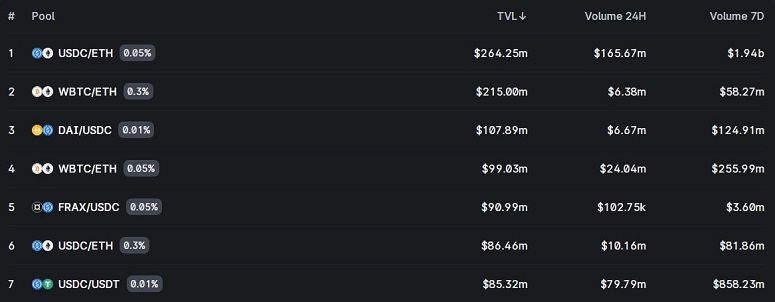
Strategies and tips for investing in the market
Protocols are active in attracting liquidity. Therefore, they offer tempting conditions for participants, especially at the beginning of the activity. An active strategy for investing in the DeFi market is to find the most profitable projects and move capital quickly. The goal is to learn about the new protocol as early as possible, invest and exit before the moment when the yield starts to fall.
Conservative investors do not chase high interest rates and prefer a stable profit in the neighborhood of 12-15% per annum. They invest top assets on proven platforms with a large number of users and high TVL. With a combination of the two approaches, it is possible to earn 30-50% per annum on the entire capital.
How to start investing
Other financial instruments cannot compete with the profitability of DeFi projects. Therefore, the market attracts beginners and professionals from different spheres. To get started you need to:
- Analyze and select a project. You can evaluate the metrics yourself or use monitoring.
- Create a cryptocurrency wallet. As a rule, MetaMask is enough, it supports all Ethereum-compatible networks. However, developers also create projects in other blockchains (Cosmos, Stellar). Special software will be required to work in them.
- Transfer assets to the interface from CEX or other storage. In most cases, it is enough to top up the ETH balance.
- Synchronize the interface and exchange assets.
- Place assets in the protocol. Need to monitor market conditions and balance assets every few days or weeks.
Risks
Many applications run on the Ethereum blockchain. However, its founder Vitaly Buterin urges to treat the DeFi market with caution. He compares income farming to the uncontrolled issuance of national currencies by states, which leads to their devaluation. Many tokens after a short-term upsurge fall to almost zero. Investing in this industry should be as cautious as possible.
Twitter users are of the same opinion – they call liquidity mining a “giant Ponzi scheme”. In addition to market risks, there are other risks:
- Vulnerability of smart contracts. Developers may not detect bugs or loopholes that hackers can use to break into the system. Cybersecurity tools are usually one step behind and address problems that have already occurred.
- Failed protocol updates. DeFi projects are community driven. However, the majority opinion may not always be correct. In some cases, changes result in financial losses.
- Loss of private keys. Users are responsible for safeguarding private passwords to access wallets. Often fraudsters get the information from the investors themselves.
Other ways to earn money
Decentralized applications attract high profitability. This direction offers innovative ways to create profits:
- Profitable farming.
- Commissions from transactions.
- Crypto-loans.
Commissions from transactions
Decentralized exchanges operate on an AMM (automated market maker) model. Customers use liquidity pools rather than an order book, as on CEX, to exchange tokens. Transactions are conducted by smart contracts without human intervention.
Each client can add liquidity to the pool (become a market maker). As a reward, he receives commissions that users pay for the exchange.
Kölcsönök
Decentralized protocols offer to borrow against the collateral of some coins for others. Usually, the loan amount is no more than 66% of the collateral for cryptocurrencies and up to 80% for stablecoins. A negligible interest must be paid for the transaction. It is usually charged once per hour or per day. The purposes of the loan are as follows:
- Need for liquidity for financing in other markets. If the amount is needed for a short period of time, it is cheaper to borrow than to sell the collateral.
- Forecast for a fall in the price of the collateral asset. In the spring of 2022, the Terra stablecoin decoupled from the dollar and fell to $0.3-0.1. Customers who blockchained Bitcoin and borrowed from UST could return the collateral at 70% (or more) below the original price and make good money. Such large collapses in the DeFi market don’t happen very often. It is common to make up to 30% on this strategy.
Profitable farming
This method of earning is common in the decentralized finance sector – investors temporarily provide liquidity to protocols in exchange for native tokens. To stimulate investments, protocols offer high yields: tens and sometimes hundreds of percent per annum.
Such rates do not last long, so professional investors constantly monitor new projects.
Pros and cons of the decentralized finance market
Investors are attracted by the transparency and availability of protocols. Most projects are open source and are managed according to the DAO model. In the table, you can compare the pros and cons of decentralized applications.
| Előnyök | Hátrányok |
|---|---|
Gyakran ismételt kérdések
📢 Why are DeFi considered safer than traditional finance?
The projects are based on blockchain technology. Fraudulent activities are impossible due to the transparency of transactions. Control is handed over to the DAO, so a single person is unable to influence the operation of the protocol.
🔔 How to analyze DeFi projects?
You can trust monitoring evaluations or do your own research. You need to analyze the security of the protocol, study the quality of the site, technical documentation, funding, investors and partners.
📌 What are some DeFi aggregators?
DefiLlama, DeFi Prime are popular in 2023.
⚡ Why do I have to pay a network fee for every transaction?
On CEX, users don’t pay fees to miners because there are none – transactions take place inside exchanges. Only deposit and withdrawal transactions are recorded on the blockchain. On DeFi, there are no internal balances, so every transaction needs to be included in the blockchain.
✨ Can I trade with leverage on DEX?
There is no margin lending on decentralized exchanges. However, it is possible to create leverage (up to 5) artificially. For example, when predicting the growth of bitcoin, they open a loan on the asset with the help of lending services. The received coins are used as collateral for the next loan – and so on in a circle, as long as there is enough collateral.
Rossz szöveg? Jelölje ki az egérrel, és nyomja meg a Ctrl + Lépjen be.
Szerző: Saifedean Ammous, a kriptovaluta közgazdaságtan szakértője.
